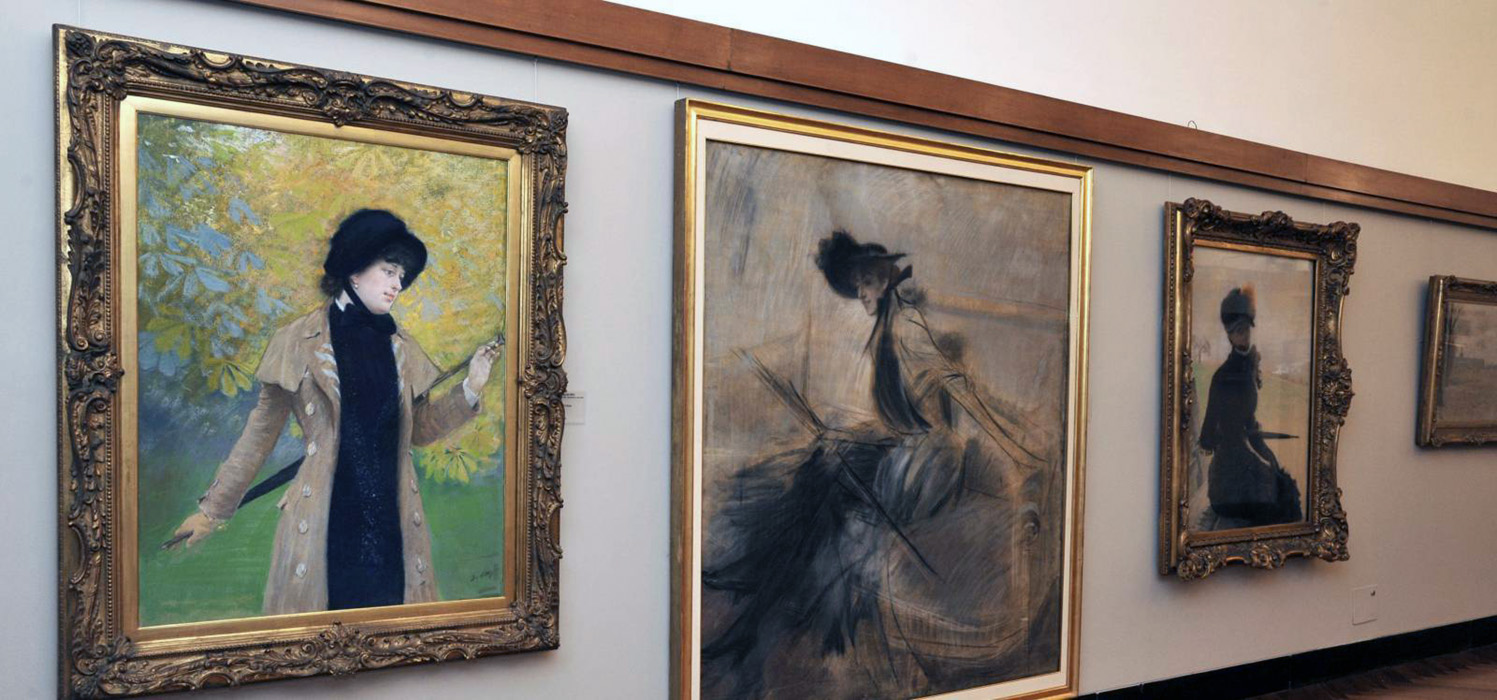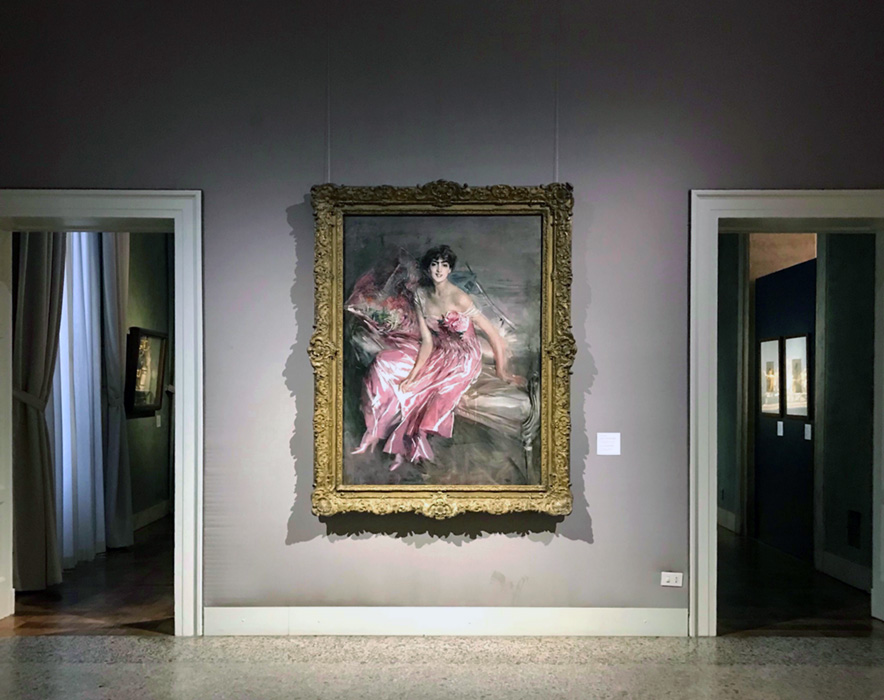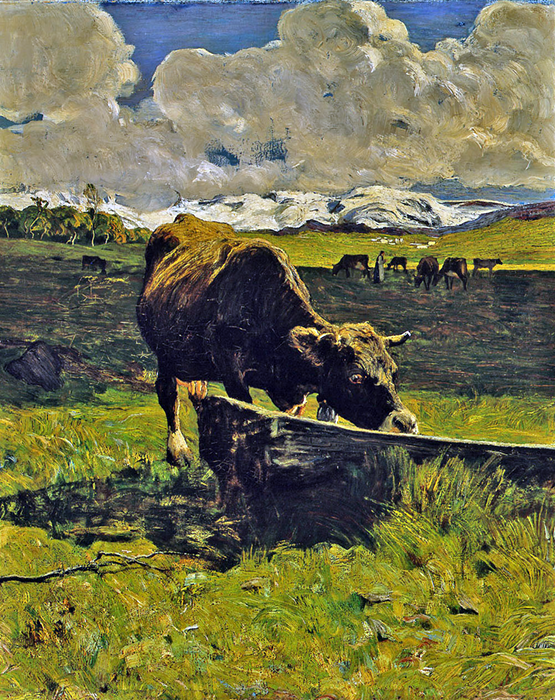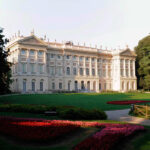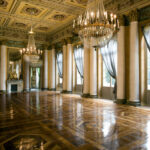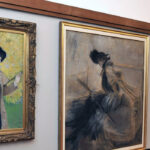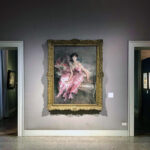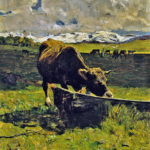Milan – GAM Modern Art Gallery
The Modern Art Gallery, the art collection of Milan’s municipality, is housed in Villa Belgiojoso, designed by Leopoldo Pollack between 1790 and 1796 as residence for Count Lodovico Barbiano di Belgiojoso.
Shortly after its completion, the Villa was taken over by the French, becoming the residence of the military governor of Milan, Gioacchino Murat, and the sumptuous setting for lunches and dance parties.
In 1804, Vice President of the Italian Republic, Melzi d’Eril, purchased the Villa from the Belgiojoso heirs to give it to Napoleon, and it was renamed “Villa Bonaparte” on this occasion. In 1806, after hosting illustrious guests such as Camillo and Paolina Borghese and Letizia Ramolino, Napoleon’s mother, the Villa became the residence of the viceregal couple formed by Eugenio di Beauharnais, Napoleon’s adopted son, and Princess Amalia of Bavaria. They preferred it to the royal palace and promoted a major decorative intervention that affected the upper floor.
The story of the Villa, concluded on an artistic level, continues on a historical parallel to the history of Milan: residence of Marshal Enrico di Bellegarde at the dawn of the Restoration; place where the so-called “Peace of Milan” (document by which on August 6, 1849, the surrender of the city to Austria was decreed in the person of Marshal Radetzky, later the general governor of the Lombard-Venetian kingdom and, in turn, resident in the Villa between 1857 and 1858); residence of Napoleon III. It finally welcomed Marshal Vaillant, commander of the French army in Italy at the dawn of the Unification.
After Unification, the Villa was assigned to the Crown of Italy and entered a long period of relative abandonment. It was only thanks to the transfer to the municipal property in 1920 that the important transformation of the historic building into the seat of the Modern Art Gallery of Milan began, inaugurated in 1921.
The Villa, designed by Leopoldo Pollack, is a three-story building with two lower advanced wings that delimit a courtyard of honor. This is shielded on Via Palestro by a wall covered with projecting bosses, elegantly marked by access arches and niches.
In the Villa, two main façades stand out, of which the second, hidden from view because overlooking the garden behind, is the most important from an artistic and figurative point of view. The rational and modular scanning of the surfaces, the very contained projection of the architectural features, and the presence of bas-reliefs give the Villa its unmistakable elegant and controlled character, well representative of neoclassical aesthetics. Illustrative works of this cultural era besides the Villa are the Palazzi Greppi, Belgiojoso, and Serbelloni, the renovation of Palazzo Reale, Villa Reale in Monza, and La Scala Theater.
The rational design that characterizes the exterior of Villa Belgiojoso is reflected in the modernity of the interiors, functionally distributed and responding to the most updated needs of social life, including air heating and an elegant bathroom with English-style toilets.
The collections of the Modern Art Gallery are displayed on the first and second floors of Villa Belgiojoso, accessed from the atrium in the center of the ground floor and the subsequent staircase.
The tour starts from the first six rooms, aimed at illustrating themes and characters of Neoclassicism, among which Appiani and Canova’s masterpieces stand out. Two entire rooms are dedicated to the genre of portraiture, with particular attention to Hayez’s works. The sumptuous ballroom and the luminous Parnassus room, both free from works, constitute two breaks in the exhibition path. The romantic season is retraced through the main artists (Faruffini, Mosè Bianchi, Induno, Piccio) and in the monographic room dedicated to the Scapigliatura. The rich divisionist season, finally, is evoked in a series of thematic rooms: Segantini, Grubicy, Longoni, up to social subject paintings by Morbelli, Sottocornola, and Nomellini. After the section with the masterpieces of Medardo Rosso, the first-floor path concludes with the symbolist paintings of Previati and Segantini.
The visit continues on the second floor with the Grassi Collection, a collection of masterpieces of Italian and foreign painting from the 14th to the 20th century, to which a nucleus of works of Eastern art is added. Among the exhibited works, unique pieces by Manet, Cézanne, Van Gogh, Gauguin. In continuity with the previous one, the visit finally includes the Vismara Collection, which gathers works of painting and sculpture of the 20th-century Italian (Carrà, De Pisis, Modigliani, Morandi, Sironi) and foreign (Picasso, Matisse, Renoir, Vuillard, Rouault, Dufy).



